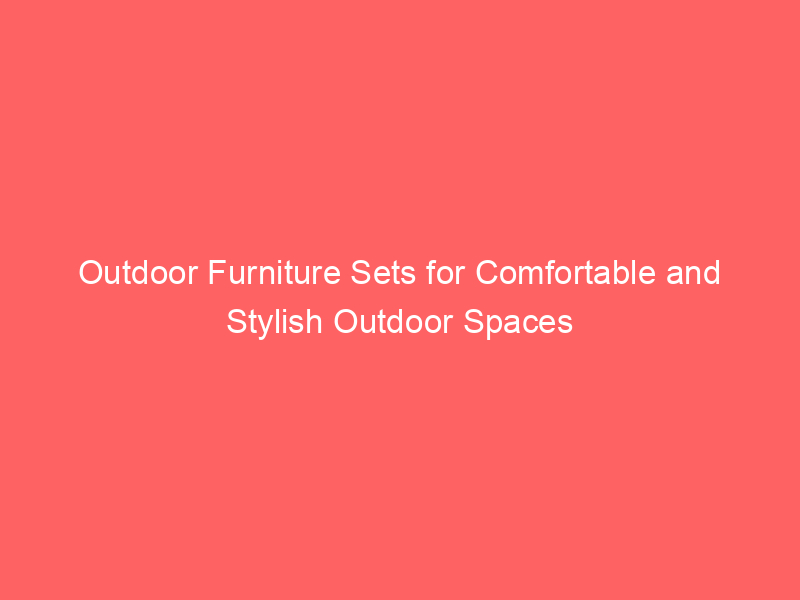Outdoor Furniture Sets for Comfortable and Stylish Outdoor Spaces

Choosing the Perfect Kids Beds for Your Child
When it comes to creating a comfortable and inviting space for your children, selecting the right bed is crucial. Kids spend a significant part of their day sleeping, and ensuring they have a cozy bed can enhance their sleep quality and, ultimately, their growth and development. In this article, we will explore various styles, sizes, and materials for kids beds, making it easier for you to make the right choice.
Types of Kids Beds
Kids beds come in a variety of types, each designed to cater to different ages, styles, and preferences. Let's take a closer look at the most popular options available:
1. Cribs
For infants, cribs are a necessity. They provide a safe sleeping environment for newborns and babies up to about two years old. A crib should meet safety standards, have a sturdy frame, and allow you to adjust the mattress height as your child grows.
2. Toddler Beds
Toddler beds are specifically designed for children transitioning from a crib to a bigger bed. They are lower to the ground and often feature side rails to prevent falls. Most toddler beds use a standard crib mattress, making it easy to switch from crib to bed.
3. Twin Beds
Twin beds are a great option for older kids. They are versatile and can fit into various room sizes. Additionally, twin beds can be paired easily with trundle beds or bunk beds for sleepovers or siblings sharing a room.
4. Bunk Beds
Bunk beds are an excellent space-saving solution for shared rooms. They come in various styles, including twin-over-twin, twin-over-full, and even custom designs. Bunk beds can be both fun and functional, allowing for additional toys or play areas underneath.
5. Loft Beds
Loft beds elevate the sleeping area, creating valuable space underneath for a desk, play area, or additional storage. They suit older children and make a great addition to a child's room, encouraging creativity and organization.
6. Daybeds
Daybeds serve a dual purpose as both a bed and a seating area. They can fit well into smaller spaces and are perfect for kids who might need a comfortable place to lounge during the day. Many come with trundle beds for sleepovers, too.
Choosing the Right Size
Selecting the right size bed for your child is vital for comfort and practicality. Here are a few tips on sizing:
- Cribs: Ideal for infants and can be used until your child is ready for a toddler bed.
- Toddler Beds: Generally suitable for ages 2 to 5, they support a smooth transition to larger beds.
- Twin Beds: Suitable for children ages 5 and up, twin beds provide enough space for comfort and growth.
- Bunk Beds: Perfect for siblings or friends, but ensure your child is at least 6 years old for the upper bunk.
- Full Beds: Provide ample space and are suitable for older kids or those who share a room.
Material Matters
When selecting kids beds, the material can significantly impact their durability, safety, and comfort. Here are some common materials and their benefits:
1. Wood
Wooden beds are popular due to their sturdy construction and timeless appeal. They can last for years and come in various finishes, from rustic to modern. However, ensure they are well-sanded to eliminate any sharp edges.
2. Metal
Metal beds can add a modern touch to a child's room. They are lightweight and can be easy to move around. Look for sturdy frames with secure joints for added safety.
3. Upholstered Beds
Upholstered beds are soft and come in various fabrics, colors, and patterns. They provide a plush sleeping experience but may require a bit more maintenance than wooden or metal options.
4. Bunk Bed Materials
Bunk beds can be made of wood or metal. If you choose a metal bunk bed, ensure it has a robust structure. Wooden bunk beds are especially sturdy and can often be disassembled into two separate beds when your child outgrows the design.
Design and Style Choices
Kids beds come in a multitude of designs, allowing you to express your child’s personality. When exploring styles, consider their likes and interests:
- Themed Beds: Whether it's a princess castle, a race car, or a pirate ship, themed beds can ignite your child's imagination.
- Colorful Designs: Bright colors can liven up a room and make it more inviting. Consider the overall room’s theme when picking color schemes.
- Functional Styles: Many beds now have additional features like built-in storage, slides, or desks, combining fun and functionality.
Safety Features to Consider
Safety is paramount when it comes to kids beds. Here’s what to keep in mind:
- Sturdy Construction: Choose a bed made from quality materials that can withstand jumping and playful activity.
- Guardrails: For bunk beds and loft beds, ensure they have guardrails to prevent falls.
- Non-toxic Materials: Confirm that paint and finishes are non-toxic and child-safe.
- Height Considerations: Ensure that the height of the bunk or loft bed is appropriate for your child's age.
Finding the Right Mattress
Once you’ve chosen the bed frame, selecting the right mattress is next. Here are some considerations to keep in mind:
- Size: Ensure the mattress fits snugly inside the bed frame.
- Material: Depending on your child's preference, common materials include memory foam, innerspring, and latex.
- Firmness: Children generally need a firmer mattress for proper support, but the right firmness depends on their weight and sleeping style.
Conclusion
Choosing the right kids beds can make a significant difference in your child's sleeping experience and overall well-being. Remember to consider the type of bed, size, material, design, and safety features when making your decision. An ideal bed not only complements your child's room but also offers comfort and support as they grow. Happy bed shopping!